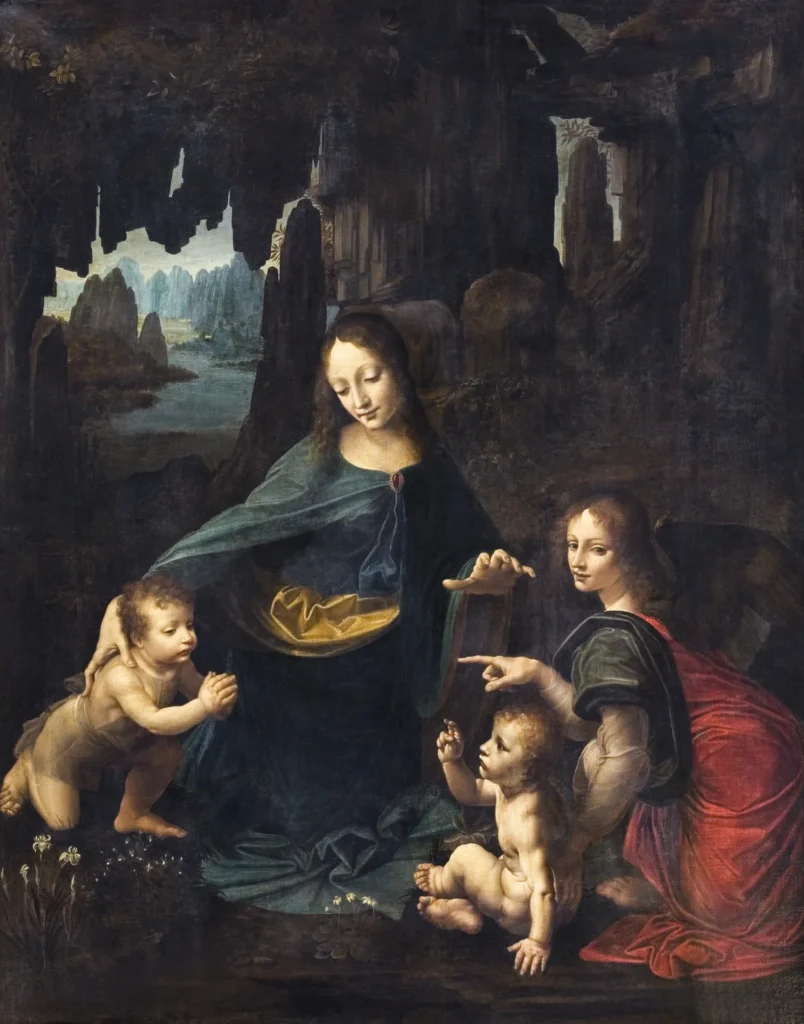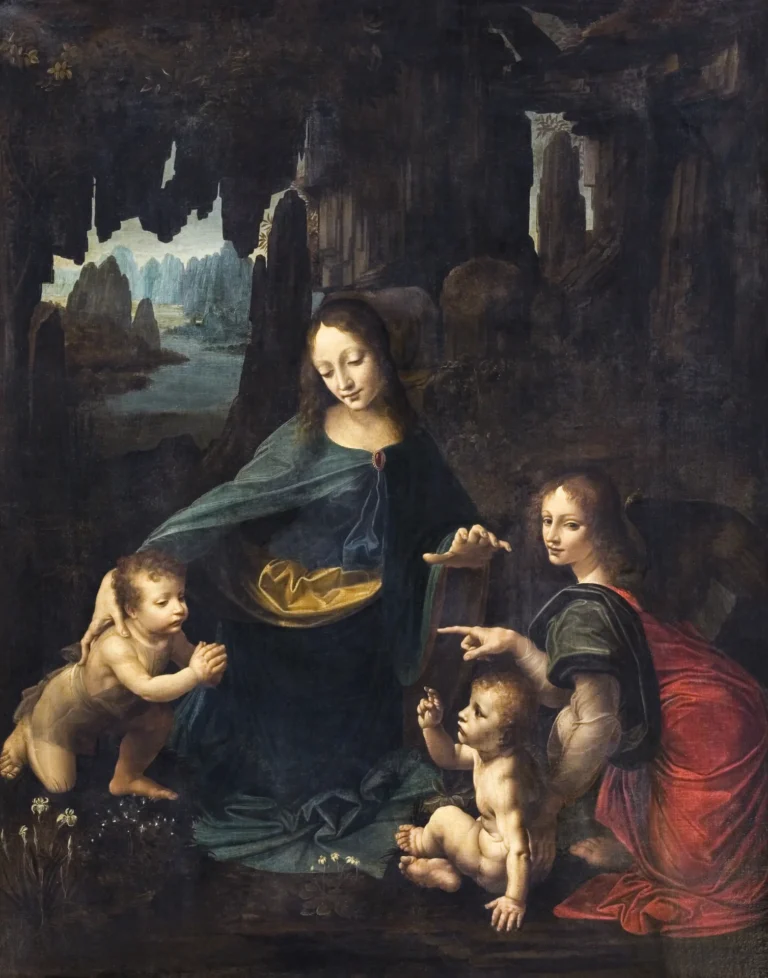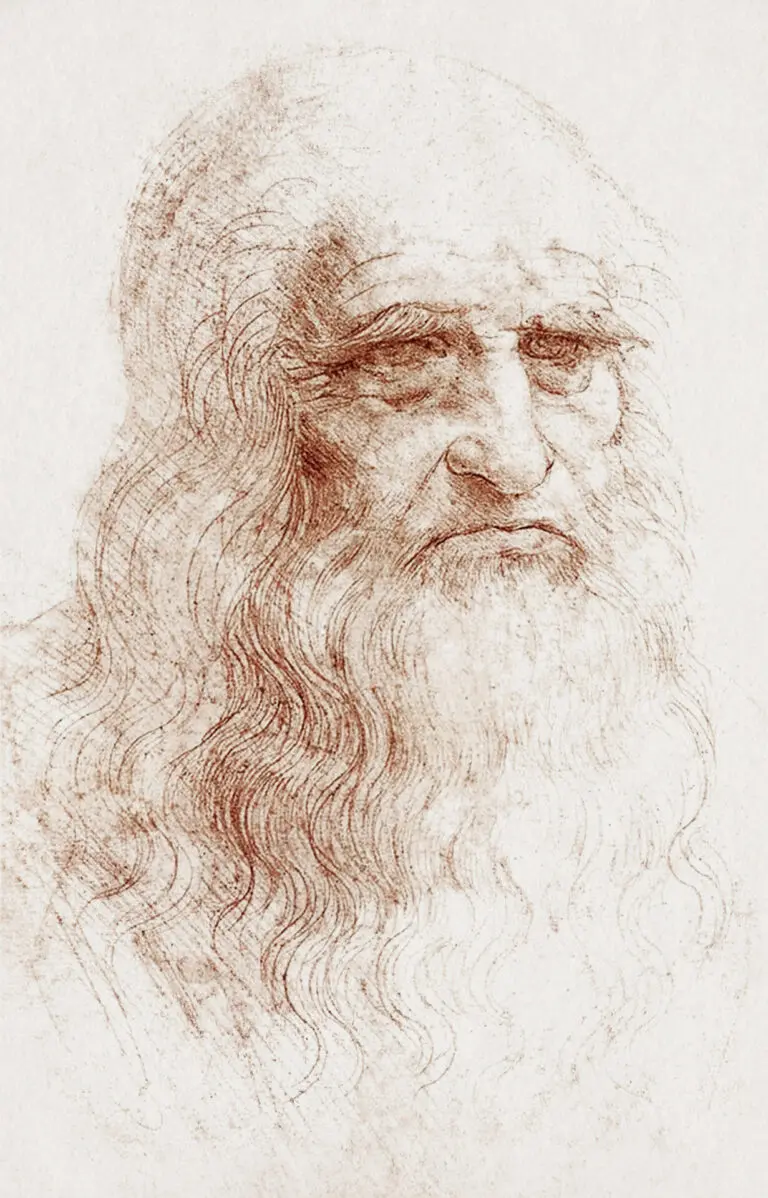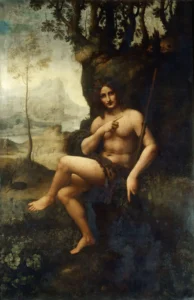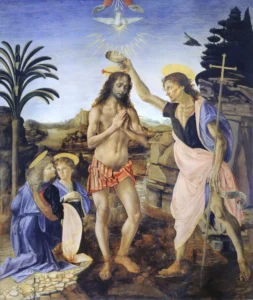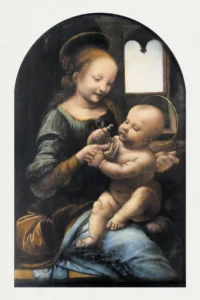The Virgin of the Rocks (1483–1508)
The Virgin of the Rocks features the Virgin Mary, infant Jesus, Saint John the Baptist, and an angel set against a mystical landscape, representing the 'Madonna of Humility.' Created in two versions, with the first between 1483-1486 and the second completed in 1508, this painting exemplifies da Vinci's innovative approach to composition and naturalism, marking a significant moment in the evolution of Renaissance art.
Late 15th Century - Early 16th Century (1483-1508)
About the Artwork
The painting was commissioned by the Confraternity of the Immaculate Conception for a chapel dedicated to the Virgin Mary in Milan. A dispute over payment led Leonardo to sell the first version, prompting him to create a second version later, completed in 1508. This artwork, rich in detail and emotional depth, highlights da Vinci's genius and his attraction to creating a sense of three-dimensionality in his figures, intertwined with a unique representation of nature.
Did You Know
Liked what you see? Add it to your collection.
Enjoyed reading? Share it.
... continued
Correct Dates and Versions
The painting The Virgin of the Rocks was not created between 1601 and 1700. Instead, there are two versions of this painting, both of which were created in the late 15th and early 16th centuries.
- The first version was painted around 1483-1486 and is now housed in the Louvre, Paris.
- The second version, which was completed in 1508, is located at the National Gallery in London.
Commission and Context
The painting was commissioned by the Confraternity of the Immaculate Conception for the chapel of the Immaculate Conception of the Virgin Mary in the church of San Francesco Grande in Milan. However, due to a dispute over payment, Leonardo sold the first version and later created the second one.
Artistic Innovations
The Virgin of the Rocks showcases several of Leonardo's innovative techniques:
- Chiaroscuro and Sfumato: The painting demonstrates Leonardo's use of contrasting light and shadow (chiaroscuro) and a smoky haziness (sfumato) to create three-dimensional figures emerging from the background.
- Natural World: The painting reflects Leonardo's fascination with the natural world, featuring detailed rock formations, plants, and flowers, some of which are invented hybrids.
- Composition: The figures are grouped within a geometric shape of a pyramid, creating an illusion of space and unifying the composition. The use of gestures and directed gazes among the figures also adds to the unity of the scene.
Figures and Setting
The painting depicts the Virgin Mary, the infant Jesus, the infant Saint John the Baptist, and an angel in a mystical landscape. This representation is known as the 'Madonna of Humility,' where Mary is seated on the ground rather than on a throne.
In summary, the correct dates for The Virgin of the Rocks are around 1483-1508, and the painting is renowned for its innovative techniques and its reflection of Leonardo's deep interest in the natural world.




